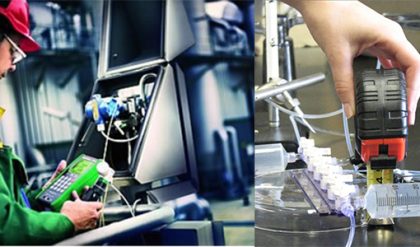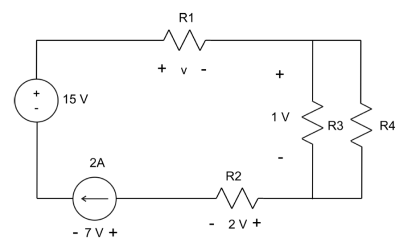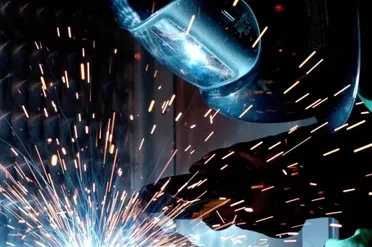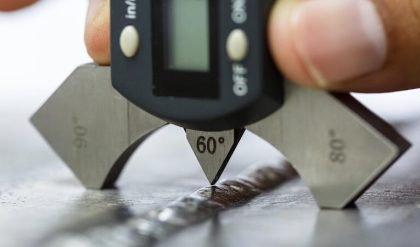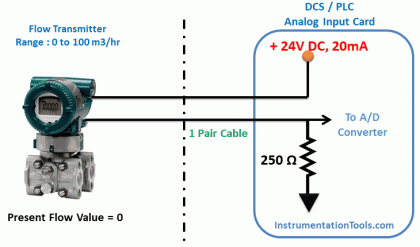Check valves are designed to prevent the reversal of flow in a piping system. These valves are activated by the flowing material in the pipeline. The pressure of the fluid passing through the system opens the valve, while any reversal of flow will close the valve. Closure is accomplished by the weight of the check mechanism, by back pressure, by a spring, or by a combination of these means. The general types of check valves are swing, tilting-disk, piston, butterfly, and stop.
Swing Check Valves
A swing check valve is illustrated in Figure 22. The valve allows full, unobstructed flow and automatically closes as pressure decreases. These valves are fully closed when the flow reaches zero and prevent back flow. Turbulence and pressure drop within the valve are very low.

A swing check valve is normally recommended for use in systems employing gate valves because of the low pressure drop across the valve. Swing check valves are available in either Y-pattern or straight body design. A straight check valve is illustrated in Figure 22. In either style, the disk and hinge are suspended from the body by means of a hinge pin. Seating is either metal-tometal or metal seat to composition disk. Composition disks are usually recommended for services where dirt or other particles may be present in the fluid, where noise is objectionable, or where positive shutoff is required.
Straight body swing check valves contain a disk that is hinged at the top. The disk seals against the seat, which is integral with the body. This type of check valve usually has replaceable seat rings. The seating surface is placed at a slight angle to permit easier opening at lower pressures, more positive sealing, and less shock when closing under higher pressures.
Swing check valves are usually installed in conjunction with gate valves because they provide relatively free flow. They are recommended for lines having low velocity flow and should not be used on lines with pulsating flow when the continual flapping or pounding would be destructive to the seating elements. This condition can be partially corrected by using an external lever and weight.
Tilting Disk Check Valves
The tilting disk check valve, illustrated in Figure 23, is similar to the swing check valve. Like the swing check, the tilting disk type keeps fluid resistance and turbulence low because of its straight-through design.

Tilting disk check valves can be installed in horizontal lines and vertical lines having upward flow. Some designs simply fit between two flange faces and provide a compact, lightweight installation, particularly in larger diameter valves.
The disk lifts off of the seat to open the valve. The airfoil design of the disk allows it to “float” on the flow. Disk stops built into the body position the disk for optimum flow characteristics. A large body cavity helps minimize flow restriction. As flow decreases, the disk starts closing and seals before reverse flow occurs. Backpressure against the disk moves it across the soft seal into the metal seat for tight shutoff without slamming. If the reverse flow pressure is insufficient to cause a tight seal, the valve may be fitted with an external lever and weight.
These valves are available with a soft seal ring, metal seat seal, or a metal-to-metal seal. The latter is recommended for high temperature operation. The soft seal rings are replaceable, but the valve must be removed from the line to make the replacement.
Lift Check Valves
A lift check valve, illustrated in Figure 24, is commonly used in piping systems in which globe valves are being used as a flow control valve. They have similar seating arrangements as globe valves.
Lift check valves are suitable for installation in horizontal or vertical lines with upward flow. They are recommended for use with steam, air, gas, water, and on vapor lines with high flow velocities. These valves are available in three body patterns: horizontal, angle, and vertical.

Flow to lift check valves must always enter below the seat. As the flow enters, the disk or ball is raised within guides from the seat by the pressure of the upward flow. When the flow stops or reverses, the disk or ball is forced onto the seat of the valve by both the backflow and gravity.
Some types of lift check valves may be installed horizontally. In this design, the ball is suspended by a system of guide ribs. This type of check valve design is generally employed in plastic check valves.
The seats of metallic body lift check valves are either integral with the body or contain renewable seat rings. Disk construction is similar to the disk construction of globe valves with either metal or composition disks. Metal disk and seat valves can be reground using the same techniques as is used for globe valves.
